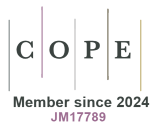Most read articles by the same author(s)
- Filippo Rumi, Michele Basile, Americo Cicchetti, Cost-effectiveness and budget impact analysis for high dose quadrivalent influenza vaccine in the Italian elderly population , Global and Regional Health Technology Assessment: Vol. 8 No. 1 (2021): January-December 2021
- Michele Basile, Ilaria Valentini, Roberto Attanasio, Renato Cozzi, Agnese Persichetti, Irene Samperi, Alessandro Scoppola, Renata Simona Auriemma, Ernesto De Menis, Felice Esposito, Emanuele Ferrante, Giuseppe Iatì, Diego Mazzatenta, Maurizio Poggi, Roberta Rudà, Fabio Tortora, Fabio Cruciani, Zuzana Mitrova, Rosella Saulle, Simona Vecchi, Paolo Cappabianca, Agostino Paoletta, Alessandro Bozzao, Marco Caputo, Francesco Doglietto, Francesco Ferraù, Andrea Gerardo Lania, Stefano Laureti, Stefano Lello, Davide Locatelli, Pietro Maffei, Giuseppe Minniti, Alessandro Peri, Chiara Ruini, Fabio Settanni, Antonio Silvani, Nadia Veronese, Franco Grimaldi, Enrico Papini, Americo Cicchetti, A pharmacoeconomic analysis from Italian guidelines for the management of prolactinomas , Global and Regional Health Technology Assessment: Vol. 11 No. 1: January-December 2024
- Michele Basile, Lorenzo Somaini, Americo Cicchetti, Budget Impact Analysis of prolonged-release buprenorphine depot-formulation for the management of patients affected by opioid use disorder , Global and Regional Health Technology Assessment: Vol. 8 No. 1 (2021): January-December 2021
- Michela Bobini, Eugenio Di Brino, Americo Cicchetti, Towards a Green Health Technology Assessment: embedding Life Cycle Assessment for sustainable choices , Global and Regional Health Technology Assessment: Vol. 12 No. 1 (2025): January-December 2025
- Filippo Rumi, Francesca Orsini, Vincenzo Falabella, Pier Raffaele Spena, Americo Cicchetti, Distribution methods of ostomy and incontinence aids in the Italian healthcare setting: an evaluation questionnaire and social burden of direct distribution , Global and Regional Health Technology Assessment: Vol. 9 No. 1 (2022): January-December 2022
- Agostino Fortunato, Filippo Rumi, Massimo Zazzetta, Marco Della Valle, Vincenzo Pedace, Americo Cicchetti, Clinical and economic burden of peristomal skin complications: Activity Based Costing analysis , Global and Regional Health Technology Assessment: Vol. 11 No. 1: January-December 2024
- Claudio Jommi, Giovanni Apolone, Giovanna Scroccaro, Valentina Acciai, Antonio Addis, Andrea Ardizzoni, Renato Bernardini, Alberto Bortolami, Alessia Brigido, Giuliano Buzzetti, Pier Luigi Canonico, Francesca Caprari, Stefano Centanni, Chiara Cernetti, Americo Cicchetti, Giorgio Corsico, Francesco Damele, Filippo De Braud, Sara Manurita, Francesco Saverio Mennini, Irene Olivi, Federica Parretta, Lara Pippo, Stefania Pulimeno, Massimo Riccaboni, Giuseppe Rossi, Cecilia Saleri, Alessandra Sinibaldi, Federico Spandonaro, Cristian Stefenoni, Elena Visentin, Pierluigi Viale, Giuseppina Zapparelli, Patrizia Popoli, Drugs price and reimbursement regulation: comparators, endpoints and role of the cost-effectiveness , Global and Regional Health Technology Assessment: Vol. 9 No. 1 (2022): January-December 2022
- Filippo Rumi, Michele Basile, Americo Cicchetti, Rosario Contiguglia, Antonella Pentassuglia, Alessandro Oliva, Gianenrico Senna, Marco Bonavia, Francesco Scarpelli, Marco Benvenuto, Introduction of the telemonitoring device Turbo+ in the management of patients suffering from asthma in Italy: a budget impact analysis , Global and Regional Health Technology Assessment: Vol. 9 No. 1 (2022): January-December 2022
- Eugenio Di Brino, Matteo Ruggeri, Stefania Boccia, Nicoletta Cerana, Domenica Lorusso, Dario Sacchini, Antonella Savarese, Liliana Varesco, Americo Cicchetti, A cost-minimization analysis of a preventive testing strategy for relatives of patients with BRCA mutated ovarian cancer , Global and Regional Health Technology Assessment: Vol. 7 No. 1 (2020): January-December 2020
- Americo Cicchetti, Domenico Addesso, Filippo Elvino Leone, Antonino Amato, Luca Angerame, Angelo D'Aversa, Mario Fraticelli, Carlo Nicora, Eleonora Sfreddo, Mariangela Fumarola, Roberta Porcino, Gabriella Cocciolo, Simona Re, Sergio Scaccabarozzi, Valorization of clinical trials from the Italian National Health Service perspective: definition and first application of a model to estimate avoided costs , Global and Regional Health Technology Assessment: Vol. 7 No. 1 (2020): January-December 2020










